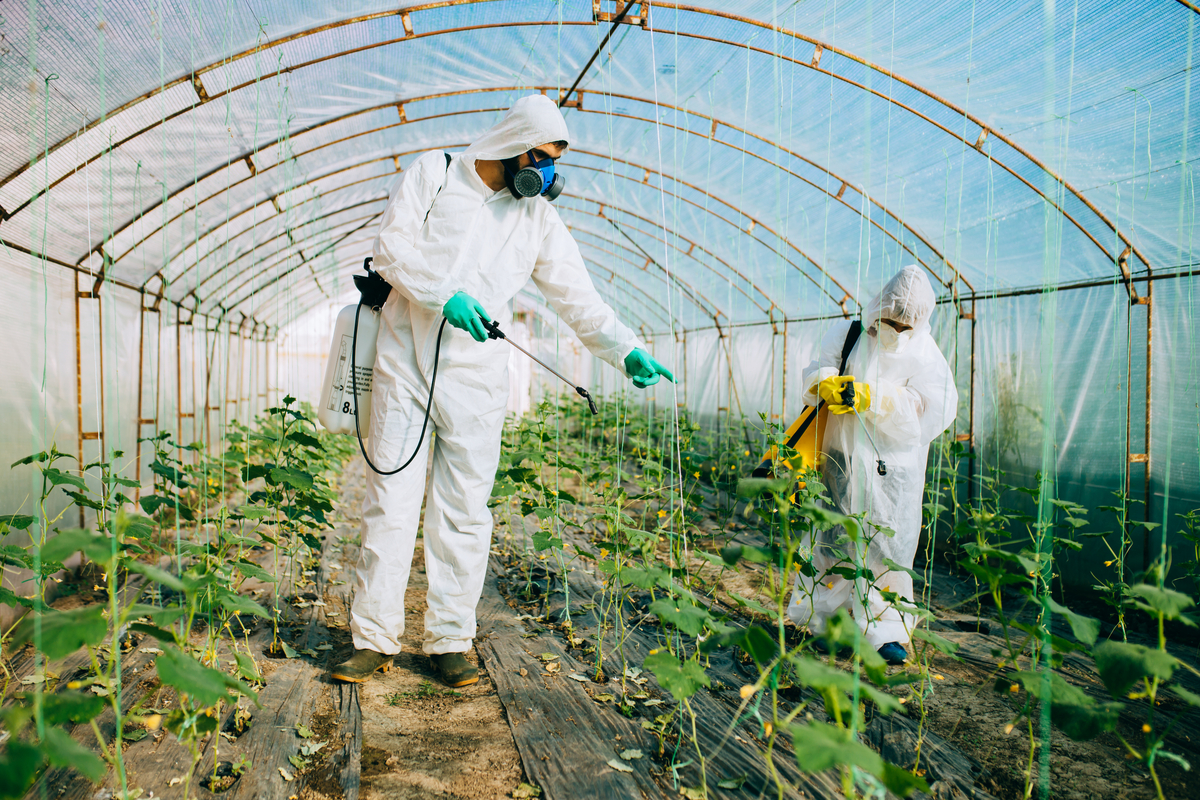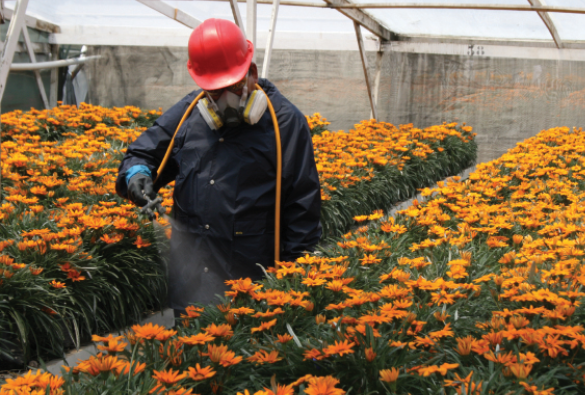Call us at 725-239-9966!
M-F: 8 AM-7 PM PST
Call us at 725-239-9966!
M-F: 8 AM-7 PM PST

For greenhouse owners, one of the most frustrating problems is dealing with pesky insects and bugs infesting plants. Greenhouse pests can quickly get out of control, damaging or destroying crops and reducing yields. From aphids and whiteflies to slugs and fungus gnats, greenhouses often harbor a number of common garden pests.
Fortunately, there are many effective methods for preventing and managing greenhouse bugs without resorting to harmful chemicals. This comprehensive guide will explore steps every gardener can take to protect their greenhouse plants from insects and promote healthy, thriving plants all season long.
Maintain greenhouse structure by sealing cracks and holes to block pests. Install tight screens over vents and windows.
Inspect new plants thoroughly before bringing them into the greenhouse. Quarantine new plants.
Identify pests quickly and take control measures. Remove heavily infested plants immediately.
Release beneficial insects like ladybugs and lacewings to prey on pests. Apply biorational insecticides derived from plants.
Avoid overcrowding plants. Provide good airflow. Monitor temperature and humidity. Practice good sanitation.

The easiest way to deal with greenhouse bugs is to prevent them from ever entering in the first place. There are several key tactics that can be employed to keep pests out and avoid infestations from taking hold.
Carefully maintaining the physical greenhouse structure is the first line of defense. Inspect greenhouses for any cracks, holes, or gaps around doors, vents, windows, and screens. Use caulk to seal any openings to block pests from sneaking inside.
Make sure doors and vents have tight seals and weather-stripping to close off access points. Keep doors shut as often as possible, especially at night when pests are most active.
Installing screens over greenhouse vents, windows, and other openings will help form a barrier to keep flying insects and other bugs out. Screens with a mesh size of 0.6mm or smaller will effectively exclude tiny insects like whiteflies and thrips while allowing airflow.
Before bringing any new plants into the greenhouse, thoroughly inspect them for signs of pests like insects, mites, or fungus gnat larvae in the soil. Quarantine new plants for a few days to ensure they are not harboring any greenhouse pests.
Good sanitation and pest control in gardens outside the greenhouse will help reduce sources of infestation. Remove weeds, diseased material, and plant debris around the greenhouse to eliminate places where pests can live and breed when not infesting plants.

Sometimes even the most careful prevention methods can fail, allowing greenhouse bugs to sneak in. Identifying infestations quickly and taking control measures is key to avoiding widespread damage. Here are tips for controlling common greenhouse pests:
Closely inspect plants in the greenhouse regularly to identify any pests that may be present. Check all surfaces of leaves, stems, and soil for signs of bugs, larvae, eggs, or webbing. Identify the specific insect or mite to determine the most effective control options.
Common greenhouse pests include:
Aphids - Small, soft-bodied insects that feed on plant sap. Cause distorted growth and spread disease. Secrete sticky honeydew.
Whiteflies - Feed on plant sap like tiny vampires, causing yellowing or death. Leave sticky residue on plants.
Thrips - Tiny elongated insects that feed inside leaves and flowers. It causes silvery scarring on leaves and petals.
Spider Mites - Microscopic pests that form webs and suck juices from plants. Cause stippling damage and leaf loss.
Fungus Gnats - Fly larvae feed on plant roots and fungi in soil. Adults lay eggs in potting mix.
Caterpillars - Larvae of butterflies and moths chew on leaves and flowers. Some species are especially destructive.
Mealybugs - Soft, segmented insects that feed on sap and excrete a cottony wax. Spread viruses.
If a plant is completely overrun by pests, it is often best to remove it from the greenhouse right away. This keeps it from infecting other plants. Throw out or destroy the plant. Sterilize pots before reuse.
Releasing beneficial predators is an easy, organic way to control bad bugs. Ladybugs, lacewings, predatory mites, and other beneficial insects feed on pests like aphids, thrips, whiteflies, and spider mites. They occur naturally outdoors and can keep pest populations in check indoors when introduced.
Always identify the pest first before selecting the appropriate beneficial insect. For example, predatory mites specifically target spider mites while ladybugs go after aphids. Follow package instructions carefully for best results.
For heavy infestations, apply biorational insecticides derived from plants or minerals. These natural pesticides work quickly but have low toxicity to people and beneficial species.
Insecticidal soaps - Made from plant-derived soaps and oils. Effective against soft-bodied insects and mites. Require direct contact.
Neem oil - Oil extracted from neem trees that disrupts insect life cycles. Avoid applying in direct sun or high heat.
Diatomaceous earth - Dust made from fossilized algae that damage soft insect bodies. Use food grade only.
Horticultural oils - Suffocate insects and mites while providing plant safety. Require good coverage of all plant surfaces for full effectiveness.
Always follow label directions carefully when applying insecticidal soaps, horticultural oils, or other biorational pesticides. Test on a few leaves first to ensure plant safety.

Creating the optimal growing environment in a greenhouse can help prevent infestations from taking hold while plants are young and most vulnerable.
Do not pack plants too densely in the greenhouse. Overcrowding causes poor air circulation and higher humidity that encourages pests and diseases.
Space plants appropriately to allow air to flow freely between them. Avoid touching the leaves of neighboring plants.
Proper airflow and circulation allow greenhouse temperatures and humidity levels to stay consistent while preventing stagnant air pockets where pests thrive.
Use exhaust fans and vents to maintain airflow. Gently brush plants to disturb insects. Avoid high humidity by watering early in the day.
Keep daytime greenhouse temperatures around 65-75°F and between 60-70°F at night. Humidity should stay below 85% to deter fungal diseases.
Ventilate the greenhouse more on hot, humid days. Keep a thermometer and hygrometer inside to closely monitor conditions.
Keep the greenhouse clean to avoid disease problems. Remove plant debris, dead leaves, and weeds where pests can breed. Sterilize pots and tools.
Spacing plants on benches or shelves prevents foliage from touching. Sticky cards trap adult fungus gnats, whiteflies, and other flying pests.

With this comprehensive guide, greenhouse growers can take a proactive stance against destructive pests. Avoiding broad-spectrum insecticides reduces risks for people and beneficial organisms. By implementing preventative practices and promptly addressing any issues, owners can safely grow robust, beautiful plants in their greenhouses pest-free.
For those looking to invest in a new greenhouse, be sure to check out our greenhouse buyer guide. Selecting a design with integrated pest prevention features will give you a head start on controlling bugs.
Insecticidal soaps should be diluted according to the package instructions and can be sprayed on your plants with a spray bottle. Be sure to cover the upper and lower surfaces of the leaves as most insects are found there. These types of soaps are effective against several common pests in a greenhouse.
Effective pest management in your greenhouse can be achieved through a combination of methods. Regularly inspect your plants, particularly the underside of leaves, for signs of pest infestation. Using sticky traps is also an effective way to monitor and control flying insects like aphids and greenhouse whiteflies.
Not all insects are bad for your greenhouse plants. Insects like ladybugs and lacewings will help control the population of harmful pests. However, detrimental pests, such as aphids and whiteflies, can damage your plants and must be controlled.
Pests that are common in a greenhouse include aphids, scale insects, spider mites, and the greenhouse whitefly. These small insects feed on plant tissue and can cause significant damage if not controlled.
New plants should be carefully inspected for signs of pest infestation before they are placed in your greenhouse. Consider isolating new plants for a week or two to ensure they do not carry pests. Also, it can be beneficial to spray new plants with insecticidal soap as a preventive measure.

{"one"=>"Select 2 or 3 items to compare", "other"=>"{{ count }} of 3 items selected"}
Leave a comment